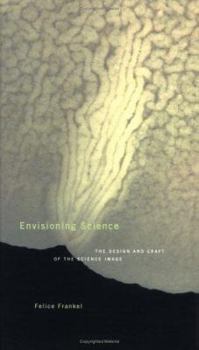Envisioning Science: The Design and Craft of the Science Image
Select Format
Select Condition 
Book Overview
Science and engineering research must be communicated within the research community and to the general public, and a crucial element of that communication is visual. In this volume, science photographer Felice Frankel provides a guide to creating dynamic and compelling photographs for journal submissions and scientific presentations to funding agencies, investors, and the general public. The book is organized from the large to small-from photographing laboratory equipment to capturing new material and biological structures at the microscopic level. Full-color illustrations including many side-by-side comparisons provide an extensive gallery of fine science photography.
Format:Hardcover
Language:English
ISBN:0262062259
ISBN13:9780262062251
Release Date:March 2002
Publisher:MIT Press (MA)
Length:328 Pages
Weight:2.65 lbs.
Dimensions:1.0" x 6.7" x 11.4"
Customer Reviews
4 ratings
Very useful book for scientists
Published by Thriftbooks.com User , 21 years ago
I had the opportunity to hear Ms. Frankel at the Materials Research Society meeting and bought the book as a consequence of her talk. Certainly, having heard some of the stories about some of the pictures helps make the book more alive, but I am convinced the book would still be a 5 star one without that advantage.Ms. Frankel does a good job covering the basics of photography (mostly film, but some digital). She spends a lot of time talking about how to use the image and construct the image to tell the story. My observation is that scientists often don't do a good job getting the image and the story out in a terribly effective way. From the perspective of using images to tell a story (particularly a technical story), this book is by far the best resource I've seen on that subject. I strongly recommend the book to scientists working with images and to those interested in journalism about science.
Simply wonderful
Published by Thriftbooks.com User , 21 years ago
This is at least two different books. The first is simply in the pictures themselves. Frankel's photography complements, even improves the quality of the science with which she works. The scientist's goal is to make new knowledge available, and Frankel has unique talent in doing this visually.The second book lies in the text around these beautiful pictures. This is an introductory guide to scientific photography. The text will work for a novice as well as a photographer experienced in other kinds of images.Above all, this is a book about communication - about visual presentation of knowledge. In a chapter of his own, the book's designer makes it clear that the book itself is an example of visual communication.Perhaps some people think that art and science are somehow opposed to each other. I think such people just don't understand either. This book shows that art and science are complements, perhaps just different ways of finding and sharing new truths.
100 years from now, we'll be talking about this book
Published by Thriftbooks.com User , 22 years ago
I first read about this book in the New York Times, and I agree with Mandelbrot's observation that it's a "masterpiece." Frankel's work will have a tremendous impact, not just on science, but on art, design, architecture, aesthetics, and the way we view the world.
Science will never be the same
Published by Thriftbooks.com User , 22 years ago
Frankel is the Muybridge and Edgerton of the new century. Anyone who reads this arresting book will never see science--or life--quite the same. Life is more exquisite and magical than we know, and thanks to her, we are able to see just how. She gives us privileged views of worlds that we could never see without her help. This book, and her previous volume "On the Surface of Things," are must-haves for any thinking person.





